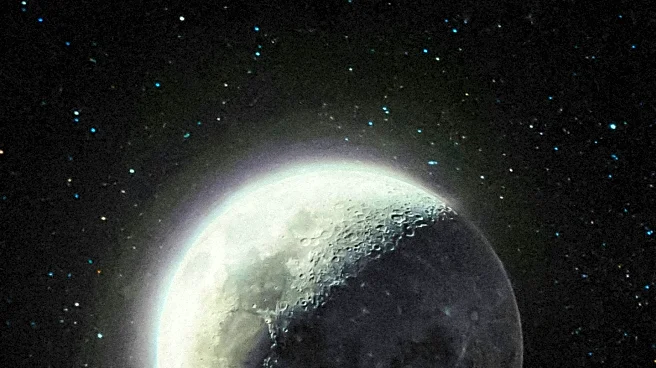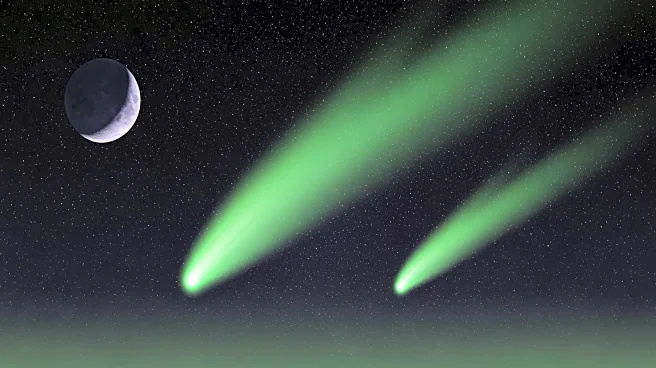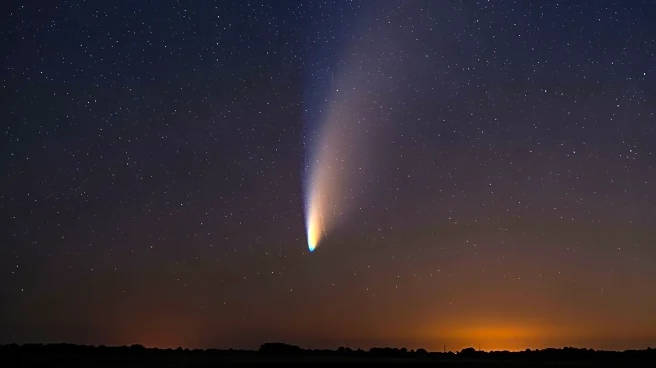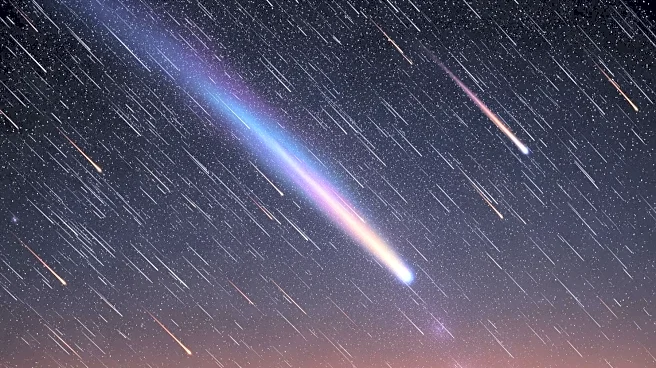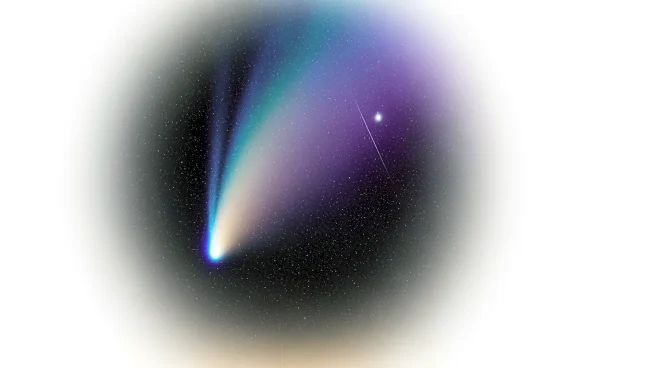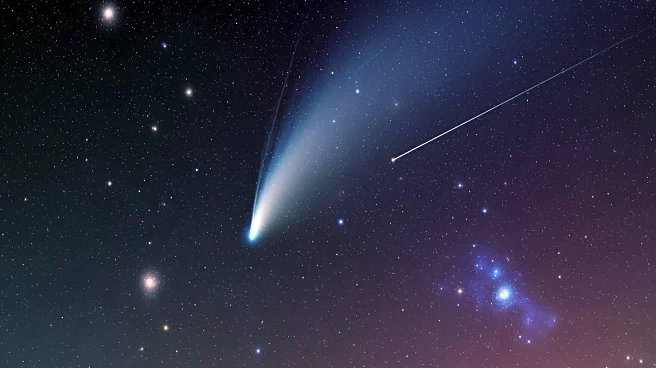What's Happening?
On October 16, 2025, the waning crescent Moon will rise alongside Regulus, a bright star in the constellation Leo. This celestial event will be visible in the early morning sky, with the Moon positioned
near the Sickle asterism, which outlines Leo's head. Regulus, a quadruple-star system, is significantly brighter than the Sun and forms part of the Sickle asterism. Observers can expect the Moon to pass close to Regulus, with a notable positional change by the following morning. The article provides specific astronomical data, including sunrise, sunset, moonrise, and moonset times, relevant to this event.
Why It's Important?
This astronomical event offers a unique opportunity for sky watchers and astronomy enthusiasts to observe the Moon's interaction with Regulus, enhancing public interest in celestial phenomena. Such events can stimulate educational activities and discussions about astronomy, potentially inspiring future generations to explore the field. The visibility of Regulus, a complex star system, alongside the Moon, provides a chance to learn more about star systems and their characteristics.
What's Next?
Observers are encouraged to look for Comet Lemmon and Comet SWAN, which will be visible in different parts of the sky. The Moon's movement relative to Regulus will continue to change, offering further observational opportunities. Astronomy enthusiasts may follow upcoming celestial events through resources like the Sky This Week column, which provides regular updates on astronomical occurrences.
Beyond the Headlines
The event highlights the importance of understanding celestial mechanics and the role of star systems in the broader context of astronomy. It underscores the significance of public engagement in science and the potential for astronomical events to foster a deeper appreciation for the universe.


